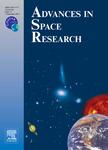版权所有:内蒙古大学图书馆 技术提供:维普资讯• 智图
内蒙古自治区呼和浩特市赛罕区大学西街235号 邮编: 010021

作者机构:School of Mechanical Engineering & Automation Beihang University Beijing 100191 China Jingdezhen Research Institute of Beihang University Jingdezhen City 333000 PR China Beijing Institute of Spacecraft System Engineering Beijing 100094 China
出 版 物:《Advances in Space Research》
年 卷 期:2025年
学科分类:08[工学] 0825[工学-航空宇航科学与技术]
摘 要:Spacecraft shields are essential for protecting spacecraft from damage caused by space debris and micrometeoroids. Depending on the source, naturally occurring impactors can reach velocities up to 72 km/s or even higher, particularly for stellar particles, presenting significant challenges for shield impact resistance. In order to enhance the debris protection performance of the Whipple shield, optimize debris cloud distribution, and improve debris kinetic energy dissipation, an SPH model incorporating eight non-spherical impactors and a Whipple shield was established and experimentally validated. This study investigates how the shape and state of the impactor, as well as the shield’s surface condition, affect the impact process using LS-DYNA. Additionally, four reinforcement designs for the Whipple shield were numerically simulated and analyzed. Results indicate that a vertical impact from a dumbbell-shaped projectile causes the most damage to the shield. The tungsten carbide coating significantly improves the kinetic energy dissipation rate of the impactor, reaching 65%, which is 137% higher than that of the traditional Whipple shield. The shot-peened shield expands the fragment cloud distribution area, effectively blocking impact fragments. Statistical analysis of fragment shape and orientation reveals a significant linear correlation between the center of mass height, the shield’s normal projected area, and the kinetic energy dissipation of non-spherical impactors. This model can predict Whipple shield damage from such impactors.